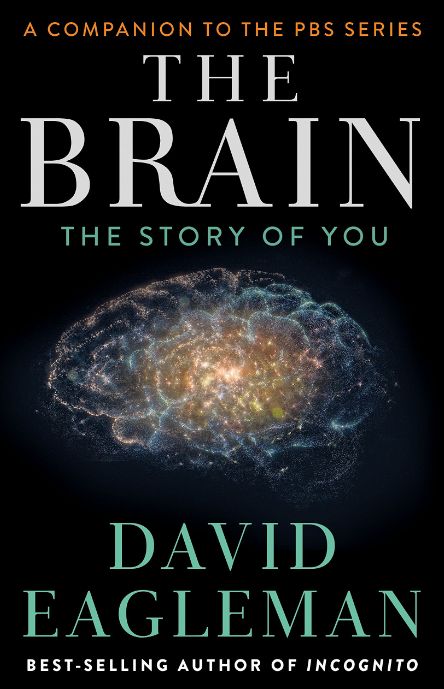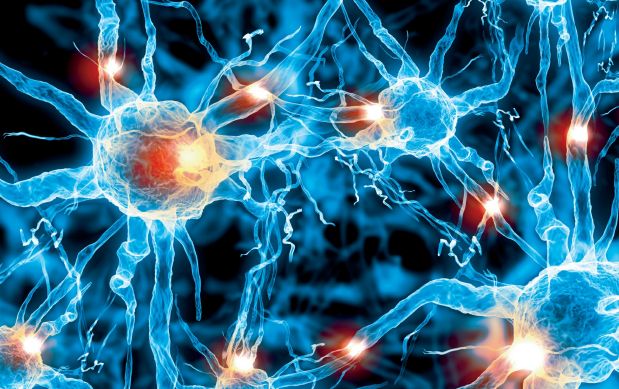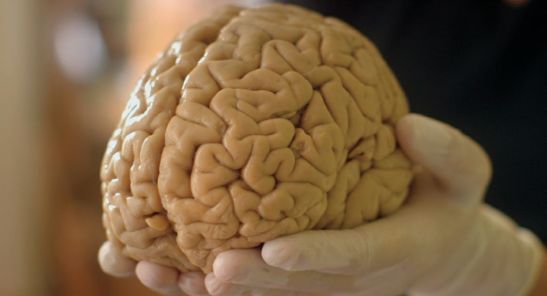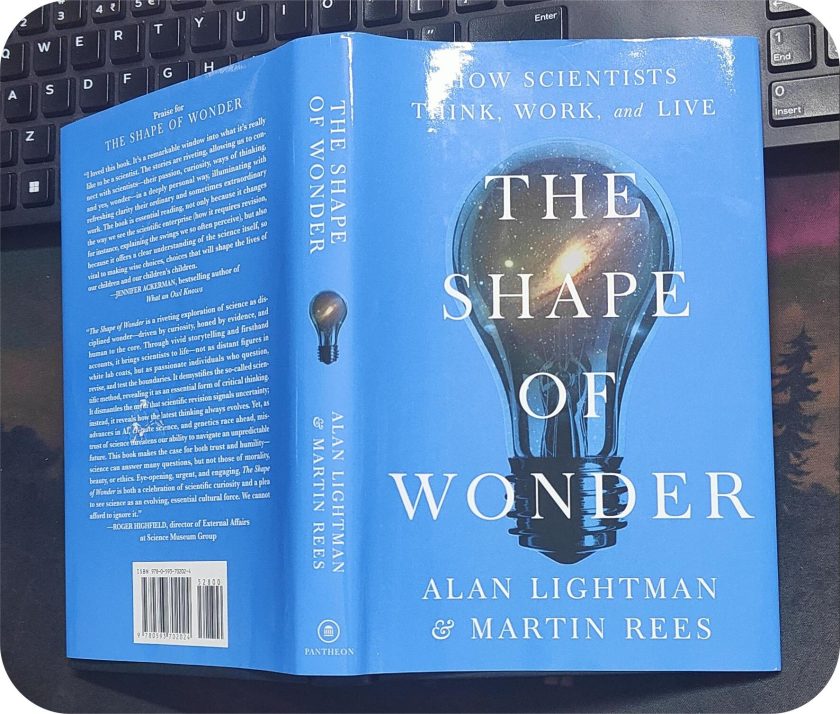
Dr. David Eagleman is a neuroscientist at Stanford, NYT bestselling author, Writer/Host of THE BRAIN on PBS, and the list continues. After listening to his podcasts and TED talks, I decided to pick-up one book from his vault – The Brain: The Story of You. The book is an interesting read and at some points, quite an eye opener.
Here, Dr. Eagleman reviews how the human brain develops and make sense of the data that it receives from sensory systems.
We are built to perceive only thin slice of perception, to what we call reality, or ‘Our Reality’. Brain takes in information, sifts through patterns and uses it to build the world around us. Hence, whatever we see and experience is mere fraction of what, actually is, out there!
This implies that what we think about ourself is again our mental construct. So, what do we mean by I-ness? Does personality exist? Eagleman’s book, The Brain tries to answer these “existential” question with the help of neurological research.
Neurons that fire together, wire together
Neurons in brain are constantly making connections. Similar concept is mentioned in book, Rewire Your Anxious Brain by Catherine M Pittman, Elizabeth M Karle. Right from the time we are born till we age, neurons are changing and making new connections. Consequently, we as a person evolve. Our preferences, tastes, and attitudes change persistently.
In the process, connections that aren’t reinforced through repetition are lost forever. When not in practice, we might end up losing some skill. After all, neurons that fire together, wire together.
In one study, explains Dr. Eagleman, London taxi drivers’ brains were scanned. They discovered that these people have larger hippocampi.
Hippocampus is a complex brain structure embedded deep into temporal lobe. It plays a vital role in regulating learning, memory encoding, memory consolidation, and spatial navigation.
The drivers’ years of training across London’s 25,000 streets, 20,000 landmarks, and 320 different routes strengthened this area of their brains. And this “knowledge” was put to use daily led to the larger hippocampus region of the brain.

What is reality?
Reality, according to Dr. Eagleman, is objective, consistent, and appears to be real.
Optical illusion, for instance, is a way to trick the mind. Our brain tries to figure out what our eyes see and make sense of it. Our reality, therefore is a mental construct molded by our sensory organs. These sensory organs control our sense of sight, taste, and smell.
Paralympic skier Mike May lost his sight at the age of three. Since then, he operated his life without the sight sense. He even cultivated a skiing career in this state. Later, at the age of 46, in 2000, he regained partial vision after cornea transplants. When his sight was restored, his entire perception of reality was disrupted. He was unable to grasp three-dimensional vision and to recognize members of his family by their faces alone. His brain was overloaded with new visual stimuli.
Before the surgery, his brain was able to recognise his family and the world around him via touch and smell. His new sense of sight overwhelmed his sensory perception, which became too difficult to handle. He struggled to adapt to the new visual stimulation that he could not do skiing like before.
His internal perception of reality got changed. His brain like us, had not yet learned to see. This concludes that sight is a combined effort between our eyes and our brains. If the communication is disrupted, our perception of reality gets affected.
To expatiate further, Dr. Eagleman then introduces synesthesia.
“It is a condition in which senses (or in some cases concepts) are blended. There are many different kinds of synesthesia. Some taste words. Some see sounds as colors. Some hear visual motion. About 3% of the population has some form of synesthesia.”
It represents the complexity of our brains. Synesthesia shows that the way our brain ingest sensory perceptions is directly responsible of how we perceive the world as our reality.
Decision-making is unconscious mental activity
We think we are in control of our daily decision making. This, from a neurological perspective, is not the case.
Daily tasks are practiced skills, which do not require much effort. Be it making tea/coffee, tying shoe lace, typing, driving, brain processes all these subconsciously. Hence to conserve energy, during such tasks, brain runs on ‘autopilot mode’.
So, when we are not overthinking, we perform better. Ten-year-old Austin Naber proves this even better. He is an expert in stacking cups. When Dr. Eagleman did a fun competition – with hooking up to EEG machines for tracking the brain’s activity- he concluded that Naber’s reports showed activity in Alpha wave band, a state associated with the brain at rest. While his own EEG showed high activity in the Beta wave frequency band, which is associated with extensive problem solving.
This demonstrates that tasks that we perform on daily basis, eventually, reaches a stage when the same task does not require significant amount of brain energy. Rather the process disengages from the conscious brain and ‘orchestrated across the thick jungles of connections in brain’. Thus, while in autopilot mode, one could still compete effectively.
Lack of conscious engagement does not mean laziness. In fact, when one reaches a level of proficiency with certain task, it morphs into effortlessness. Brain is at ease, like Austin Naber’s.

Conscious decision-making is a feedback loop
So, what leads to conscious decision-making process? Whenever we make a decision, we activate a variety of different sensory and emotional associations that helps us make that choice. Thus, decision making, from a neurological perspective, is feedback loop with positive or negative associations.
People tend to repeat their decisions when they enjoy, for instance, brain releases dopamine that is associated with pleasurable sensation. This plays a vital role in choosing the option when faced with similar decision-making choice.
Brain and body coordination
If connection between brain and body is severed, brain is not able to communicate with the body. For instance, after a catastrophic motorbike accident, Tammy Myers wasn’t able to decipher when she is in pain, or hungry, or happy.
Similarly, our body also influence brain’s preference for short-term satisfaction or instant gratification. Waiting for too long makes it less inclined towards a certain task that is why most people fail to diet or skip regular consistent workouts. Brain needs immediate reward.
So, what needs to be done, to break the habit of poor choices or immediate reward that disrupts the consistency for better life style?
Dr. Eagleman suggests, Ulysses Contract is a way to trick the brain. According to Greek myth, Ulysses was a ship’s captain. He knew that his future self would be in no position to make good decisions. Since, they had to surf through region that was full of Sirens. They were humanlike beings with alluring voices, who eventually would kill their victims. So, he made prior arrangements like stuffing ears with cotton and tying himself to the ship’s mast to avoid the lures. And it worked for him.
Therefore, to make Ulysses pact a reality in our lives, we need to build and maintain good habits and decisions despite future temptations. This includes strictly following new workout routine, finding an accountability partner and above all keeping away from all kinds of distractions during work.
People ape one another
Human beings are very social creatures. They have an innate desire to be a part of a tribe. This is the main reason why people can relate to others feelings and emotions so easily.
Neurologically empathy occurs through mirroring. Others facial expressions act as cues to our brains in imitating their behaviour. After all, people do feel emotional after watching movies that are saturated with emotions.
“A smile was reflected by a smile, even if the movement of their muscles was too slight to be visually obvious. Without meaning to, people ape one another.”

Technology will upgrade humanity
People fear that technology will make humanity obsolete, Dr. Eagleman however, thinks otherwise. Advancement of tech will enable us to harness the power of electronic devices like sensors.
These sensors may give slight edge to our sensory portals as peripheral plug-and-play devices. Whatever information comes in, the brain figures out what to do with it.
“In this framework, evolution doesn’t need to continually redesign the brain, just the peripherals, and the brain figures out how to utilize them.”
Combining tech with our brains will create a new entirely new frontier of human existence. It will not make humanity obsolete but, it would simply upgrade it.
Takeaway
The book gives us an interesting tour of our brain. An organ that is the fulcrum of our lives because of which we can boldly say we exist and we have a reality. But we often do not understand major portion of our brains.
Neuro-plasticity, empathy, sensory process, brain-body coordination, indeed help us to get to know the complexity of our brain. But there is something about the organ that still remains elusive.
Overall, The Brain: The Story of You will be of great interest for those who are interested to know more about the three-pound organ and how it makes us who we are.



